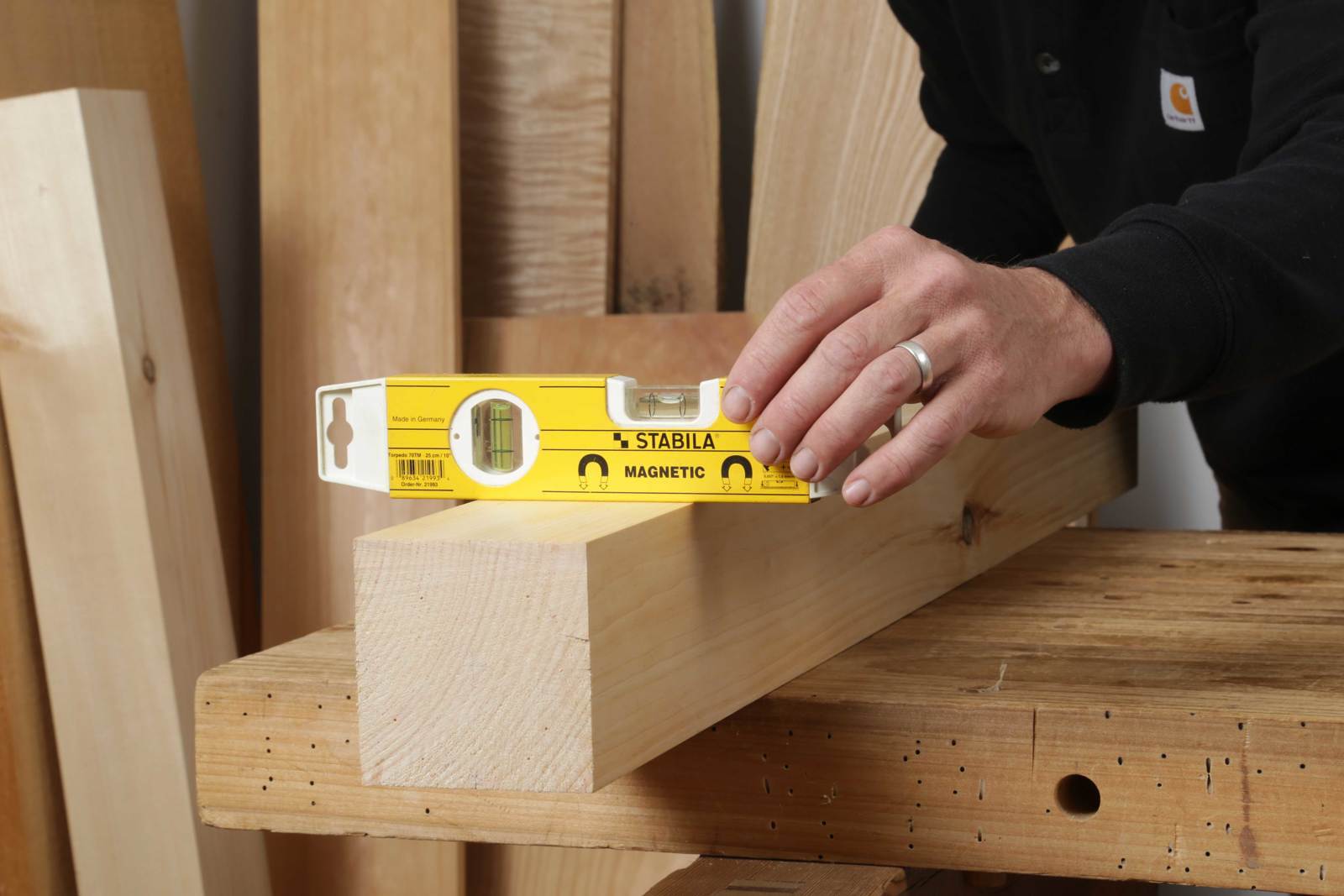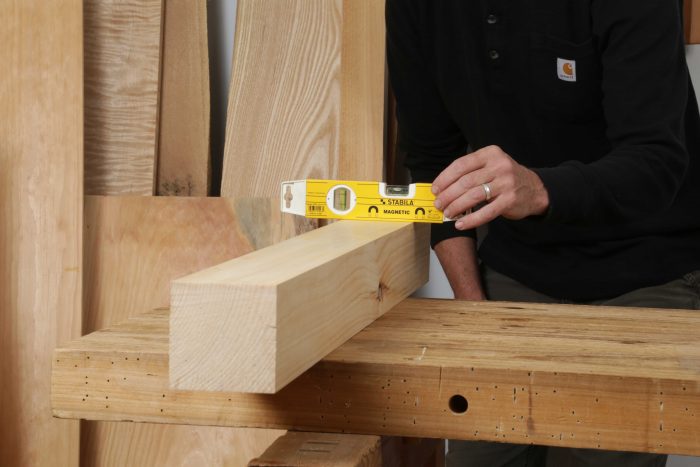Centerline Layout for Large Stock
Large timbers can be cumbersome to square up for the sake of accurate joinery. When necessary, Andrew Hunter turns to an ancient layout method using centerlines.

In furniture making, it’s usually easiest to work from straight and square edges. I usually pick two faces, joint them straight and square, and reference all my layout from them. In other words, all of my joinery layout is based off of these two planes. But sometimes I like to work outside of the square box and rely on centerlines.
Centerline layout simply moves the point of the reference to the middle of the workpiece—for instance, the middle of its face—instead of a corner where a face and edge meet. For joinery, you just need a second centerline square to the first, much like X-Y axes. This is exactly what I did when laying out the kanawa tsugi in FWW #279.
While I did my best to make the workpieces in that article straight and square, they were rather large—3-1/2 in. square—and long, and jointing and squaring pieces that size can be a chore. The kanawa joint was traditionally used in Japanese house architecture, where the posts are bigger, about 5 in. square, and long enough to hold up buildings—so even more burdensome to mill straight and square. Centerline layout forestalls this issue.
Because the joinery is laid out from lines in the middle of stock, your workpieces can be different sizes—or even warped in some way—and the joints will still fit perfectly. You just need the centerlines to be straight and true, much easier to accomplish than jointing an edge square to a face. This works just as well for milled stock as for flowing, sculptural forms. With centerlines, you can still lay out joinery and have the parts line up correctly.
Just be sure to have flat layout tools handy. While the fences on things like combo squares and try squares are great when you’re layout originates from an edge, they just get in the way with centerline layout. Instead, turn to flat tools, like plastic drafting triangles or a framing square (I prefer Japanese). In a pinch, a square of MDF will do just as well.
Layout
So how do you lay out centerlines, particularly on irregular stock? One method I like relies on level and plumb lines drawn on the workpieces’ ends before being connected across the faces.










Fine Woodworking Recommended Products

Festool DF 500 Q-Set Domino Joiner

Leigh D4R Pro

Starrett 4" Double Square







Comments
Thanks for another fantastic contribution Andrew. Your simply yet deeply consider approach to sharing Japanese carpentry skills is refreshing and greatly appreciated.
Where did you buy your Japanese framing square?
I got mine from Lee Valley.
Log in or create an account to post a comment.
Sign up Log in